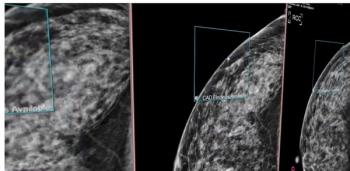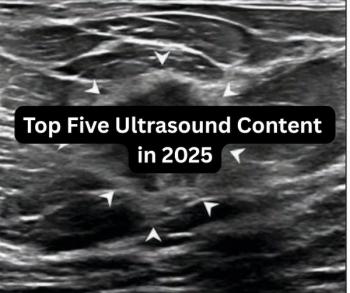
Medical Device Legislation Should Be Re-Authorized, But Without User Fee Changes
Re-authorize MDUFA without raising user fees to fund unrelated programs.
Life expectancy in the U.S. has markedly improved over the last century. At the turn of the 20th century, it was
These long-term trends provide important perspective for Congress as it considers re-authorizing the Medical Device User Fee and Modernization Act of 2002 – the next authorization is referred to as MDUFA V.
All new medical devices – the wide range of products that are used to diagnose, treat, monitor, or prevent diseases and conditions – must obtain U.S. Food & Drug Administration (FDA) authorization before the products can be marketed and sold in the United States. Prior to MDUFA, FDA’s review process was widely viewed as inefficient, time consuming, and the FDA rarely met the required deadlines.
For more coverage based on industry expert insights and research, subscribe to the Diagnostic Imaging e-Newsletter
As a result of these inefficiencies, patients’ access to potentially lifesaving or life-enhancing medical devices were unnecessarily delayed, harming health outcomes. From the companies’ perspectives, the delays created uncertainties that made marketing their products more difficult and complicated the process of conducting follow-up studies.
MDUFA is a win-win-win policy that reduces these problems.
Related Content:
For the FDA, MDUFA ensures that the agency has access to the necessary resources to improve its efficiencies. Consider that the
For the manufacturers, the improved speed and predictability of the approval process improves manufacturers’ efficiencies and planning processes. Perhaps most importantly, the expedited review process provides patients with faster access to new medical devices.
These results strongly support the argument that MDUFA V should be authorized by Congress. The terms of that reauthorization are a bit more controversial.
MDUFA’s benefits are enabled by the act’s user fee structure. There are, undoubtedly, strong arguments in favor of funding the FDA’s review process by levying user fees on the manufacturers submitting devices for approval. There are equally strong arguments that user fees should only partially fund the review process and general tax revenues should also fund a substantial portion of these costs.
It is commonly accepted that government agencies
The benefits from the FDA’s medical device review process contain both of these elements. Medical device manufacturers benefit greatly from an efficient review process, but so does the broad patient population. The current blended revenue structure that funds the review process with both MDUFA user fees and general tax revenues balances both types of benefits.
Over time, the revenue structure has been tilting toward an excessive
This excessive growth in user fees is becoming an excessive tax on manufacturers that, if not appropriately managed, will reduce their efficiencies and incent wasteful expenditures on programs that do not enhance the FDA’s mission of performing a comprehensive and timely safety review process of new medical devices. The consequence will be a higher-cost, less efficient, FDA.
It is imperative that Congress recognize these considerations in its upcoming MDUFA reauthorization process. While reauthorizing MDUFA is an important public health policy, the user fee authority should not be used as a slush fund to authorize ancillary programs that do not enhance the agency’s prime directive.
Wayne Winegarden, Ph.D. is a Senior fellow and Director of the Center for Medical Economics and Innovation at the Pacific Research Institute
Newsletter
Stay at the forefront of radiology with the Diagnostic Imaging newsletter, delivering the latest news, clinical insights, and imaging advancements for today’s radiologists.




























